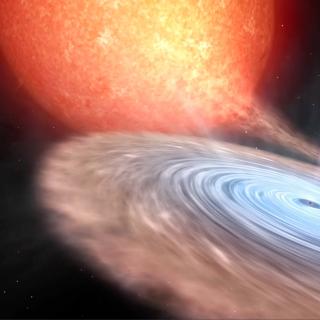Bibcode
Shahbaz, T.; Russell, D. M.
Referencia bibliográfica
Monthly Notices of the Royal Astronomical Society, Volume 438, Issue 3, p.2083-2096
Fecha de publicación:
3
2014
Número de citas
44
Número de citas referidas
39
Descripción
Polarization measurements of the microquasar Cygnus X-1 exist at
γ-ray, X-ray, ultraviolet, optical and radio frequencies. The
γ-ray emission has been shown to be highly linearly polarized.
Here, we present new infrared polarimetric data of Cygnus X-1 taken with
the 10.4 m Gran Telescopio Canarias and the 4.2 m William Herschel
Telescope. We show that the broad-band, radio-to-γ-ray flux
spectrum and polarization spectrum in the hard state are largely
consistent with a simple phenomenological model of a strongly polarized
synchrotron jet, an unpolarized Comptonized corona and a moderately
polarized interstellar dust component. In this model, the origin of the
γ-ray, X-ray and some of the infrared polarization is the
optically thin synchrotron power law from the inner regions of the jet.
The model requires the magnetic field in this region to be highly
ordered and perpendicular to the axis of the resolved radio jet. This
differs from studies of some other X-ray binaries, in which the magnetic
field is turbulent, variable and aligned with the jet axis. The model is
able to explain the approximate polarization strength and position angle
at all wavelengths including the detected X-ray (3-5 keV) polarization,
except the observed position angle of the γ-ray polarization,
which differs from the model by ˜60°. Past numerical modelling
has shown that a curved synchrotron spectrum can produce a shift in
position angle by ˜60°, which may account for this.
Proyectos relacionados

Agujeros negros, estrellas de neutrones, enanas blancas y su entorno local
Los agujeros negros y estrellas de neutrones en binarias de rayos-X son laboratorios únicos para explorar la física de estos objetos compactos. No solo permiten confirmar la existencia de agujeros negros de origen estelar a través de mediciones dinámicas de sus masas, sino que también permiten investigar el comportamiento de la materia y la
Montserrat
Armas Padilla